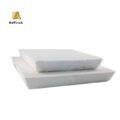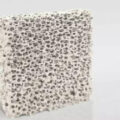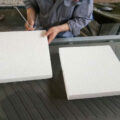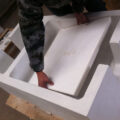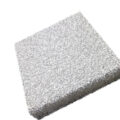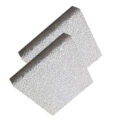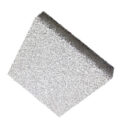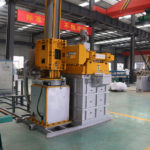Strict melt treatment processes such as gas flux can minimize the occurrence of processing defects in aluminum products. However, for critical applications, these have not succeeded in reducing them to a satisfactory level. Generally, aluminium melt filtration is used to reduce defects, which are mainly caused by inclusions in the melt.
AdTech designed a ceramic foam filter, which is very advantageous in filtering molten metal, especially molten aluminum, and is easy to prepare at a reasonable cost. We provide an efficient ceramic foam material for aluminium melt filtration.

The ceramic foam material is characterized by having an open-cell structure with a plurality of interconnected voids surrounded by the net of the ceramic material. The filter has an air permeability of 400-2500 × 10-7 cm2. In addition, the ceramic foam filter has a porosity or porosity of 0.80-0.95. Furthermore, the filter is characterized by 5 to 45 holes per linear inch and an effective filter thickness range of 1/2 to 4 inches. It has been found that the filter is particularly suitable for filtering molten metal, especially molten aluminum.
Under normal circumstances, use a finer filter with an air permeability of 400 to 2500×10-7 cm 2, a porosity or porosity of 0.80 to 0.95, and 20 to 45 holes per linear inch, especially for filtering 5000 Series of aluminum alloy. However, if the input metal is particularly dirty, it should be pre-filtered. The relatively coarse ceramic foam metal filter has a PPI between 5 and 20, a pore size of 2500 to 8000×10-7 and cm 2 of air permeability, and a porosity or porosity between 0.90 and 0.95. This can be achieved by providing a single ceramic filter with grading characteristics or by using a series of filters with different porosities.
The method of aluminium melt filtration through a ceramic foam filter is characterized by using a flow rate of 5 to 50 cubic inches of molten metal per minute per square inch of filter area to pass through the filter. According to the filter application of the aluminum plant, the molten metal can be initially filtered through a coarse ceramic foam filter, and then filtered through the finer, preferred filter of the present invention. This filtration step may use a series of filters with reduced porosity of ceramic foam, especially for particularly dirty melts.

